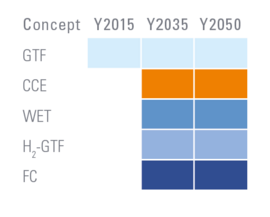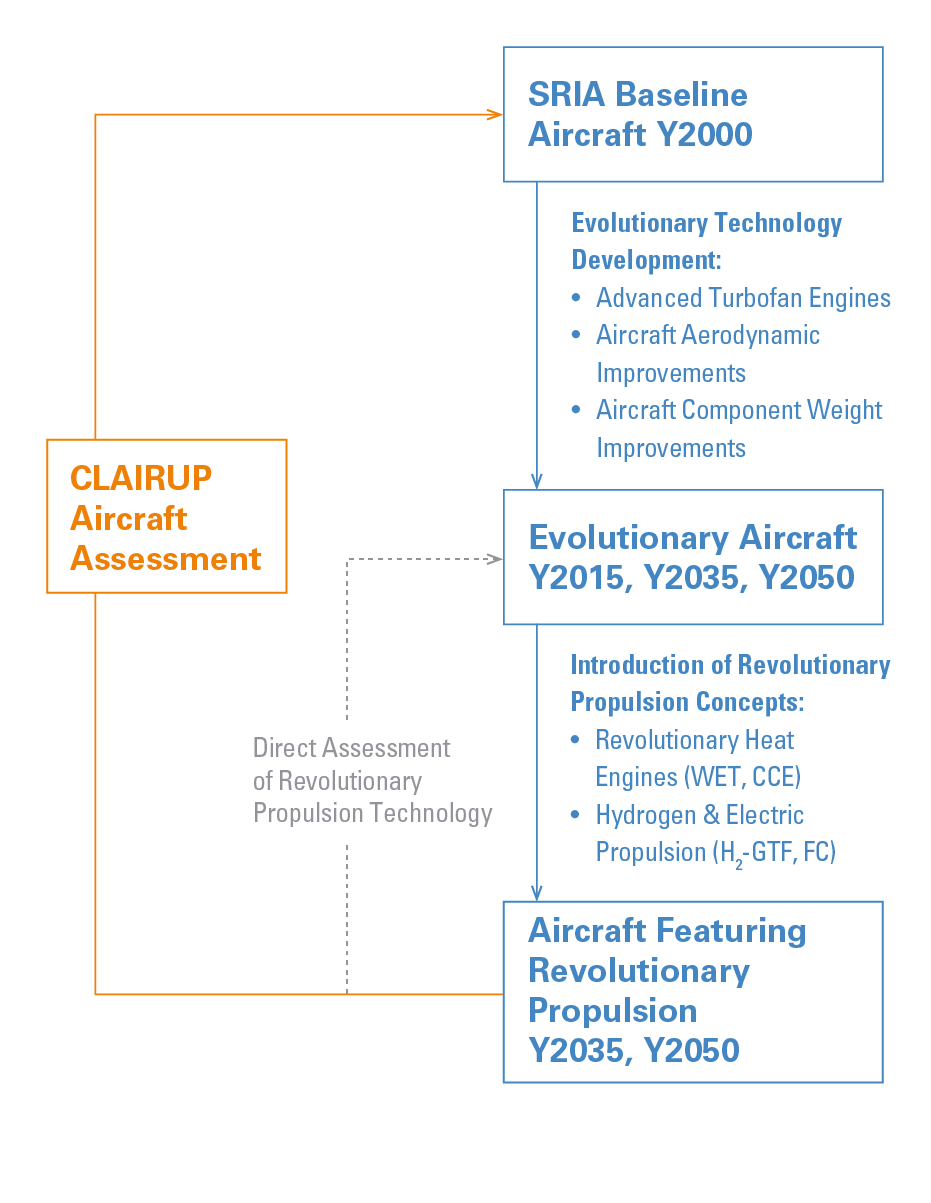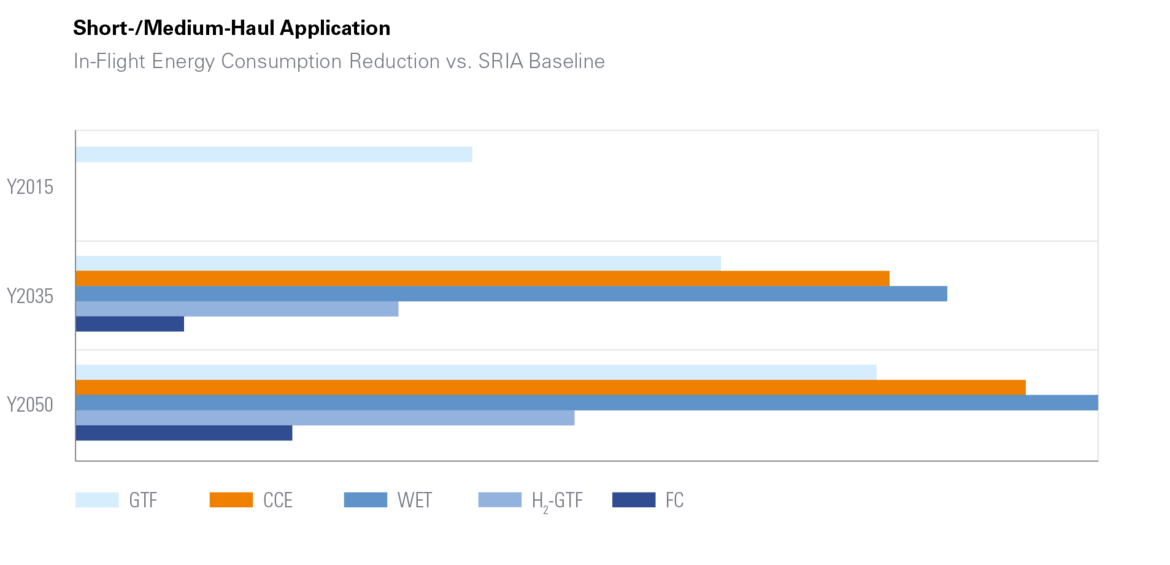In a short project carried out in an agile manner, Bauhaus Luftfahrt investigated several revolutionary propulsion concepts for three aircraft sizes and different dates of entry into service for MTU Aero Engines. Due to their potential, revolutionary propulsion concepts are an important component of a sustainability strategy. The propulsion concepts evaluated were a geared turbofan (GTF), a water-enhanced turbofan (WET), a composite cycle engine (CCE), a hydrogen-powered geared turbofan (H2-GTF), and a fuel cell (FC).

Aircraft sizes studied included a regional, a short-/medium-haul, and a long-haul aircraft. Technological developments were estimated up to the year 2050, whereby the respective entry into service was specifically selected depending on the propulsion concept. A highly simplified, statistically based aircraft design was used. The evolutionary development of conventional aircraft technology aspects (e.g. drag and weight reduction) was priced in by expected annual improvement rates. Novel aircraft components (e.g. hydrogen tanks) were incorporated through appropriate simplified methods. The performance data of the propulsion systems were determined partly by MTU Aero Engines and partly by Bauhaus Luftfahrt. The H2 concepts experience disadvantages in the aircraft structure and aerodynamic performance due to the integration of an H2 storage tank, while the FC concept additionally experiences increased complexity due to the integration of heat dissipation. The greatest energy savings were identified in the revolutionary turbomachinery.


